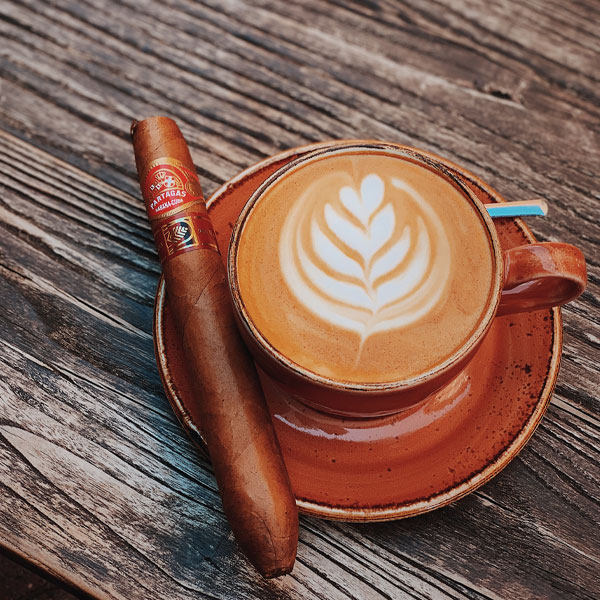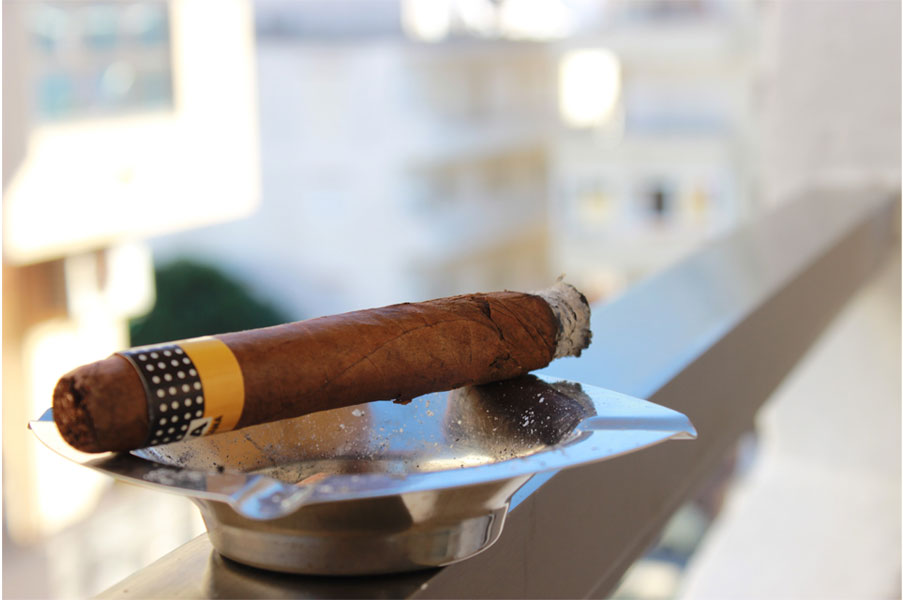How to Smoke Cigars Like a Pro | Gotham Cigars Blog
In truth, you can never call yourself an aficionado unless you know some specific rules and etiquette about smoking a cigar. However, no one really tells you what you should or shouldn’t do. But you can be sure that novice mistakes will be noticed. Cigar aficionados pride themselves in knowing how to smoke a cigar like a pro. These obscure rules and etiquette play an essential role in keeping the “cigar club” exclusive.
How To Smoke Cigars Like A Pro
Lucky for you, I am willing to share the most crucial tips on how to smoke cigars like a pro. If you adopt these tips, you’ll fit right in.
1. Choosing the right cigar
First off, you cannot just pick any cigar at any time of the day. Cigar smoking is an intricate ritual that should be well-thought-out.
For instance, if it’s your first time to have a cigar, consult your local brick and mortar or a veteran smoker. You want an excellent beginner cigar that will not knock you out and ruin your first experience. I recommend a Camacho Connecticut stick. It is mellow, flavorful, and a tremendous first-time stogie for anyone.
Also, choose the right size. A 52-ring gauge Presidente can be overwhelming for a first-timer. Maybe go for a 40-ring gauge Robusto or Corona.
2. Inspecting the cigar
Most cigars are handmade. This means inconsistencies are the order of the day. For the most part, discolorations and spots may mean nothing more than a faulty curing process, or it could be plume, the epitome of a well-aged cigar. However, in some instances, you may end up with some serious issues like mold, beetle holes, or a torn wrapper, which can very well render the cigar unsalvageable.
You need to learn how to check your cigar for taste altering blemishes. Ask your cigar vendor if you can inspect the cigar before buying. Look for hard or soft spots, ridges, irregular shape, mold, holes, or tears. Ideally, you want a uniformly hued wrapper, not too dry or too moist, and uniform construction. The cigar should feel firm in your hand with no soft or hard spots.
3. Cutting the cigar
Once you are satisfied with your pick, it is time to cut off the cap. The cap is the little wrapper bits used to seal the head – you know, the end that goes into your mouth.
Cigar cutting is not a precise art. Cigars come in different shapes and sizes, which means choosing where to cut depends on the type of cap as well as the cutter. We covered this topic in our How to Cut Cigars article.
Under no circumstances should you try to pry the cap off with your teeth. This just ruins your draw and may end up tearing your wrapper.
Before proceeding to the next step, give your cigar a draw. You want to ensure you have a perfect draw with just the right level of resistance. If your draw is too snug, consider cutting a little more off the cap. This should open up your draw. Rule of thumb; cut sparingly. The truth is, it is better to cut off too little and then proceed accordingly, rather than to cut off too much. There is no coming back from that.
4. Toasting
First of all, choose the right fire source. You cannot just use any lighter to toast your cigar. Cigars are very susceptible to surrounding flavors. Avoid cardboard matches and fluid-filled lighters as they tend to alter the taste of the tobacco. Butane lighters, torch lighters, or cedar matches are your best choices. Ensure the sulfur head on the matches completely burns off before using it to toast your cigar.
Once you have a flame going, hold the cigar so that the tip is slightly above the fire. Cigar veterans know not to shove the cigar foot right into the flame. Hold the cigar right above the flame while gently spinning it. This is toasting. Toasting dries out the wrapper and filler around the foot. This way, your cigar is all primed and ready to light up.
5. Lighting
After toasting, it is time to set that baby ablaze. The process of lighting a cigar is similar to toasting, except the flame should be closer to the foot this time.
Do not stop spinning the cigar. You want an even ember all round. At this point, you can draw on your cigar with the flame still sitting below the foot.
Sometimes drawing and then puffing on the cigar creates a flame at the foot. Some cigar gurus simply continue toasting the cigar until the foot spontaneously combusts. That the optimal sign that your cigar is ready to smoke.
6. Smoking
All that remains is to enjoy your stogie. Hold your cigar between your thumb and forefinger. Holding it between your forefinger and middle finger makes you look like a confused cigarette smoker. Also, do not inhale. Draw on your cigar and hold the smoke in your mouth to discern the flavors.
Retrohale may be a little more complicated. You want to draw on your cigar, hold the smoke in your mouth for a bit and then exhale most of the smoke. Push the remaining smoke up your nasal cavity and out of your nostrils. Retrohale is a great way to discover subtle flavors you couldn’t discern otherwise. Remember, cigar smoking is a leisurely past time. Do not rush your cigar. Actually, take up to a minute between draws. A cool cigar holds flavors better than a warm cigar.

7. Pairing
Pairing your cigar with the right drink is the cherry on top. Depending on the time of day and flavor profile, you can go for a coffee, cognac, bourbon, scotch, or even a beer. Pairing is really about preference.
8. What to do with the band
When and how you handle the cigar band says a lot about your cigar smoking skills.
It’s simple, really. After a few draws, the cigar gets a little warm. Then, you can easily remove the band. However, if gently tagging on it does not work, smoke the cigar a little more until the glue holding the band warms up and melts. Forcefully removing on a band can tear the wrapper and ruin your stogie. Do not under any circumstances smoke the band.
9. How to take the ash off
Everyone wants to show off a 2-inch mast of cigar ash. However, pros know precisely when to drop the ash, so it doesn’t make a mess. The moment your ash goes beyond an inch, it is time to drop it lest it falls on your lap. Place your cigar on the ashtray and gently tap on it.
Sometimes this will not work. Premium cigars can have sturdy ash for up to 2 inches. If the ash doesn’t drop, let it be. Take a few more draws and try again. Forcing ash to drop exposes the ember and may result in temporary harshness.
10. How to put out a cigar
The impulse to stub your cigar nub in a bid to extinguish it is all wrong. The correct way to put out a cigar is to simply leave it alone. Cigars go out after a while if left unattended.
If, for instance, you were interrupted and couldn’t finish your cigar, simply let it extinguish itself. Later you can relight it and continue. However, the flavor profile may never be as good as a freshly lit cigar.
If you decide to relight an old cigar, first remove all the ash and semi-burnt fillers from the foot. Blow on it to remove any residual debris and then light away.
11. Practice in private
This is more of a tip than a step. Practice how to smoke a cigar like a pro in private until you master it. Particularly if you have a cigar event coming up, ensure you hone your skills and etiquette so that you can be relaxed and natural in public.
Final Thoughts
Cigars are the symbol of class and finesse. For this reason, it is worth learning how to do it right. Our tips on how to smoke cigars like a pro are spot-on. Try them, and you will fit right in and enjoy the “knowing looks” you will receive from your fellow aficionados.
Recent Posts
-
Best Connecticut Shade Cigars for Mellow Mornings
There’s a special kind of calm that comes with the morning—the air is fresh, the world …20th Aug 2025 -
The Smoothest Cigar Wrappers for Beginners
Starting your cigar journey can feel overwhelming, especially with the wide range of cigar types, …19th Aug 2025 -
Connecticut, Habano, Maduro: Cigar Wrapper Types Explained
When it comes to choosing the right cigar, the wrapper leaf is one of the most important factors i …18th Aug 2025








